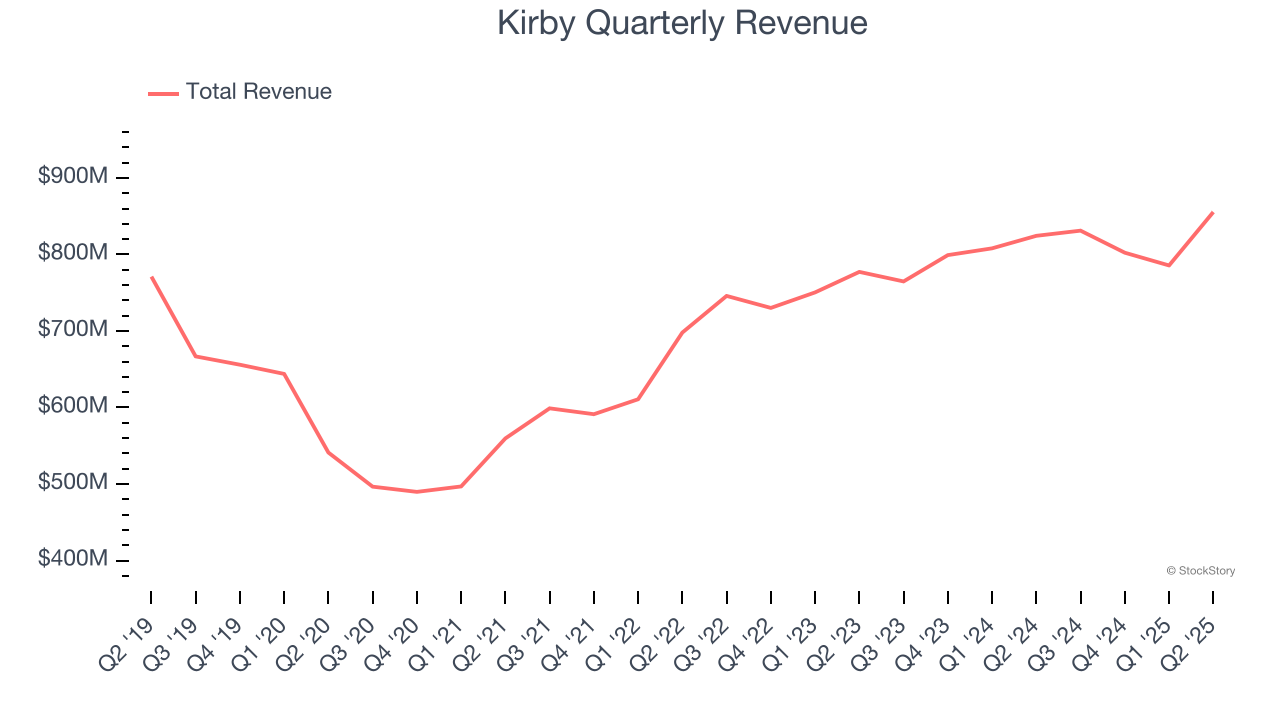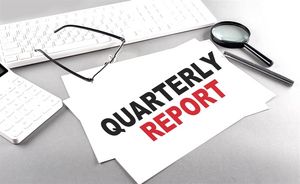
Over the past six months, Kirby’s stock price fell to $99.62. Shareholders have lost 7.5% of their capital, which is disappointing considering the S&P 500 has climbed by 5.3%. This may have investors wondering how to approach the situation.
Is there a buying opportunity in Kirby, or does it present a risk to your portfolio? Get the full stock story straight from our expert analysts, it’s free.
Why Is Kirby Not Exciting?
Even with the cheaper entry price, we're cautious about Kirby. Here are three reasons why you should be careful with KEX and a stock we'd rather own.
1. Long-Term Revenue Growth Disappoints
A company’s long-term sales performance is one signal of its overall quality. Even a bad business can shine for one or two quarters, but a top-tier one grows for years. Over the last five years, Kirby grew its sales at a tepid 5.5% compounded annual growth rate. This fell short of our benchmark for the industrials sector. 
2. Free Cash Flow Margin Dropping
If you’ve followed StockStory for a while, you know we emphasize free cash flow. Why, you ask? We believe that in the end, cash is king, and you can’t use accounting profits to pay the bills.
As you can see below, Kirby’s margin dropped by 7 percentage points over the last five years. If its declines continue, it could signal increasing investment needs and capital intensity. Kirby’s free cash flow margin for the trailing 12 months was 8%.

3. Previous Growth Initiatives Haven’t Impressed
Growth gives us insight into a company’s long-term potential, but how capital-efficient was that growth? Enter ROIC, a metric showing how much operating profit a company generates relative to the money it has raised (debt and equity).
Kirby historically did a mediocre job investing in profitable growth initiatives. Its five-year average ROIC was 3.2%, lower than the typical cost of capital (how much it costs to raise money) for industrials companies.

Final Judgment
Kirby’s business quality ultimately falls short of our standards. Following the recent decline, the stock trades at 14.3× forward P/E (or $99.62 per share). This valuation is reasonable, but the company’s shakier fundamentals present too much downside risk. We're fairly confident there are better investments elsewhere. We’d suggest looking at a dominant Aerospace business that has perfected its M&A strategy.
Stocks We Would Buy Instead of Kirby
Trump’s April 2025 tariff bombshell triggered a massive market selloff, but stocks have since staged an impressive recovery, leaving those who panic sold on the sidelines.
Take advantage of the rebound by checking out our Top 9 Market-Beating Stocks. This is a curated list of our High Quality stocks that have generated a market-beating return of 183% over the last five years (as of March 31st 2025).
Stocks that made our list in 2020 include now familiar names such as Nvidia (+1,545% between March 2020 and March 2025) as well as under-the-radar businesses like the once-micro-cap company Tecnoglass (+1,754% five-year return). Find your next big winner with StockStory today.
StockStory is growing and hiring equity analyst and marketing roles. Are you a 0 to 1 builder passionate about the markets and AI? See the open roles here.






